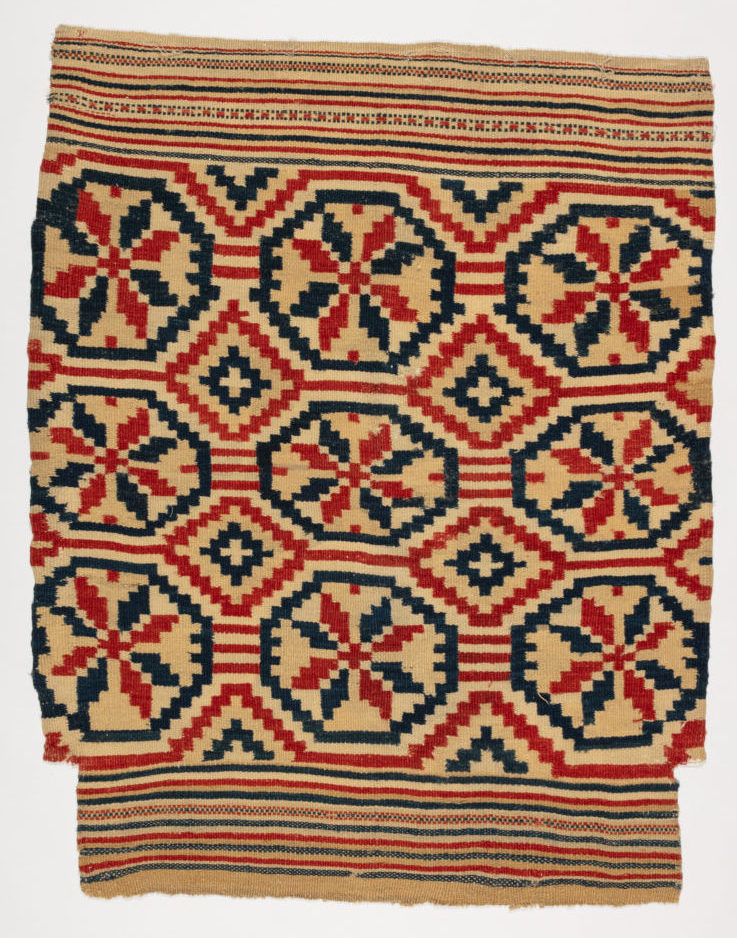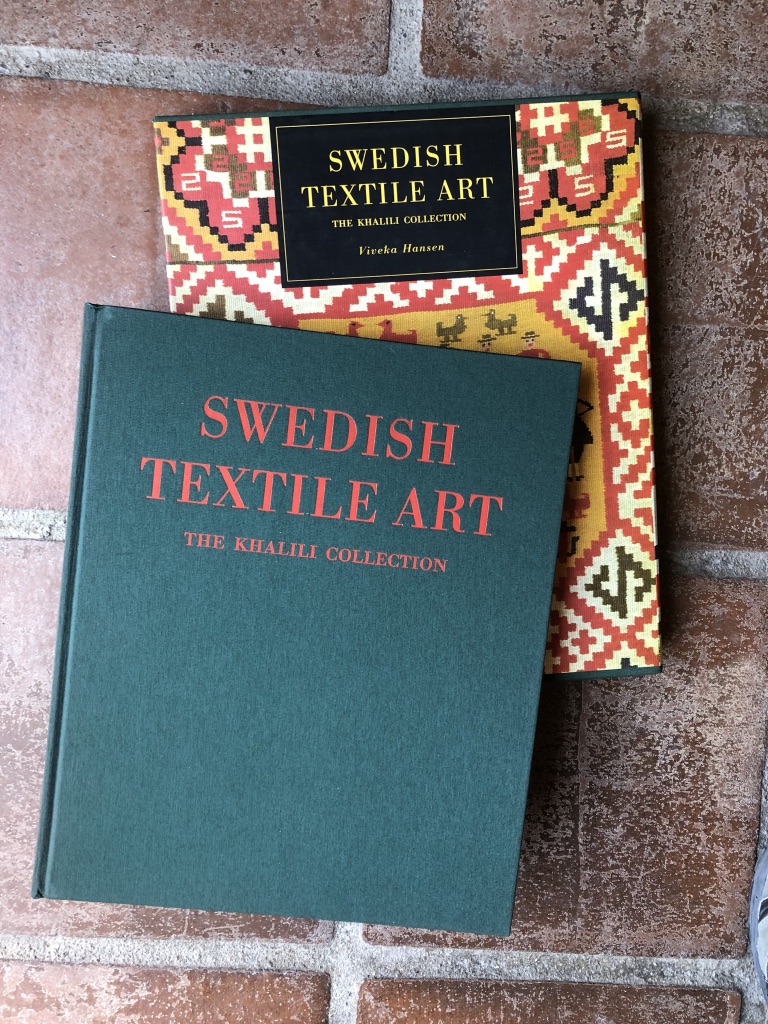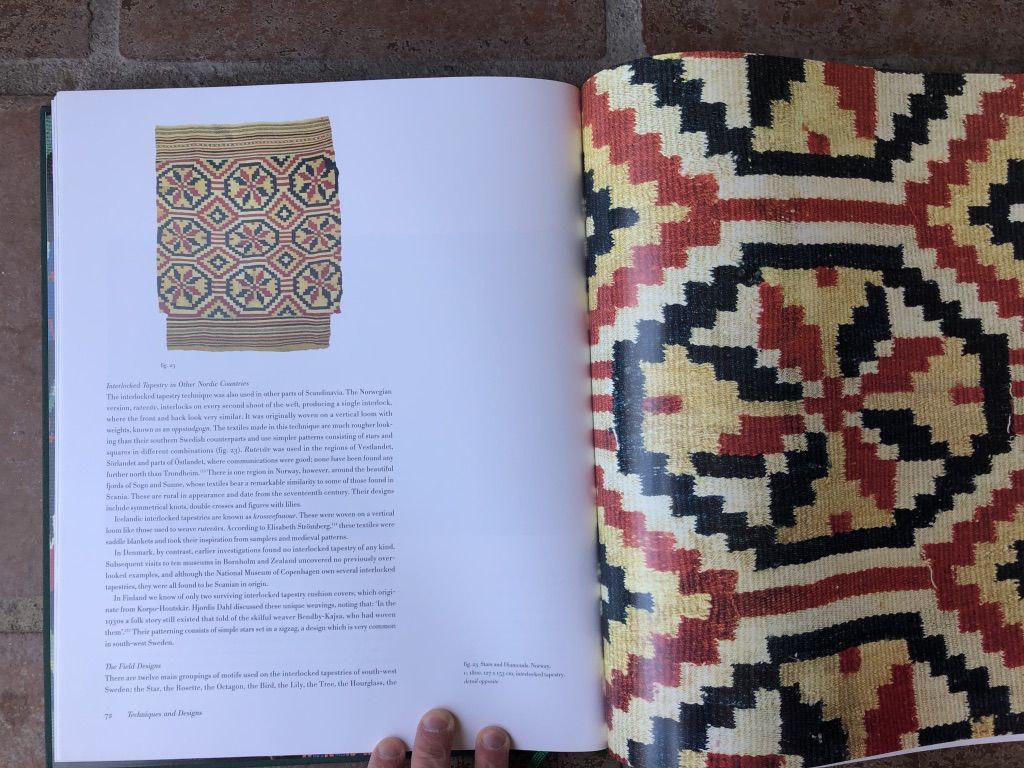
A Norwegian Blanket, Retevev Technique
- by Jamie Compton
- in A closer look...
- posted April 4, 2019
This Wonderful Norwegian blanket has similarities to the early classic Navajo blankets. The colors are the same with golden white, strong red and deep indigo blue. I was compelled to acquire this blanket both because of the similarities as well as the beauty of this specific example. In addition to the colors, the weavers stepping with the design up or down to create angles of color off of vertical or horizontal, same as executed on early Navajo blankets.
This blanket differs from Navajo mostly in the scale of design as well as there are no banding systems other than what one finds at the top and bottom. Here the blanket is more similar to the early Rio Grande blankets, especially since these bands include ticking patterns similar to Rios. The yarns in this blanket are all two-ply hand spun, whereas Navajo weft is all one ply unless it is made from raveled bayeta or from early machine plied yarns.
The body of this blanket’s design is much more like that of a grid, like a checker board, however, looking closely one can see that there are actually two sets of horizontal bands. One set is made of three bands and includes the larger stars. The other set of bands includes the more discrete system that contains two crosses inside the indigo blue.
I’ve owned this blanket for several years. While online about a month ago, I spotted a book at auction titled Swedish Textile Art the Khalili Collection by Viveka Hansen. I’ve been researching this Norwegian blanket to better understand the origins of this weaving style. I had long given up when this book showed up. I was the winner of it at auction, and when the book showed up I thumbed through it finding, to my utter surprise, two photos of the exact blanket I had purchased herein.
Apparently this blanket was made around 1800 and was an offshoot of design based on textiles coming out of Southern Sweden. The technique used is called Retevev and is differentiated from the Swedish blankets in several ways, predominately in its coarseness.
There is mention that it may have been made as a wedding blanket. There is no mention of the narrow end, which does suggest that it was made for a bed. This blanket measures 60.5″ x 49″ and is available for inspection and purchase. Please contact me if you want further information, jamie@jamescomptongallery.com or 505 699-0323.




